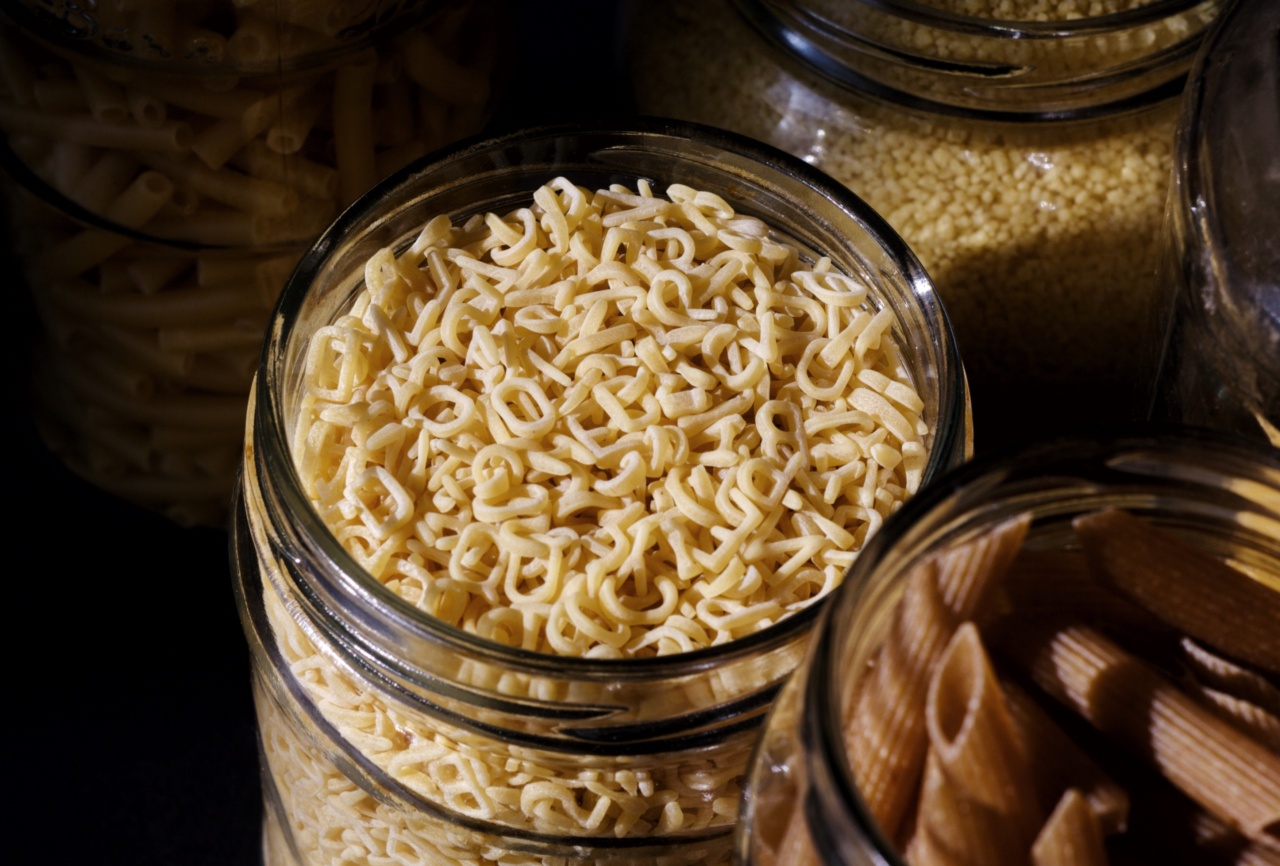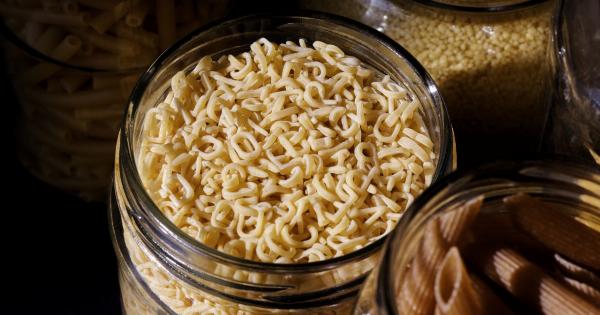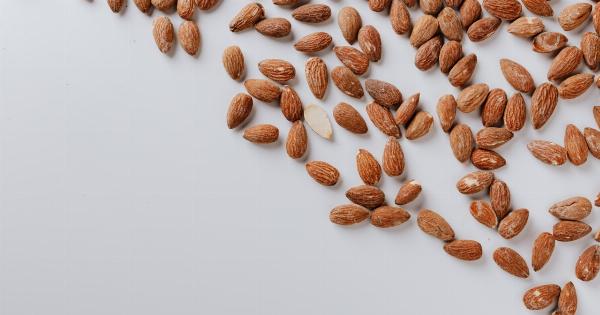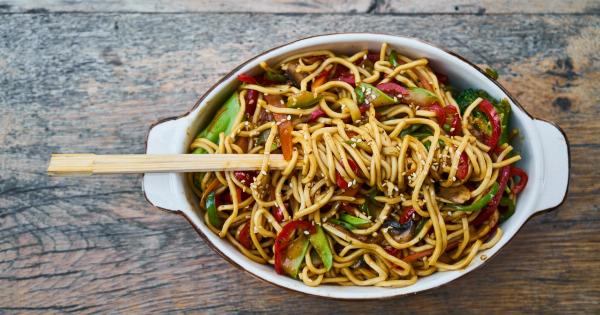There are many misconceptions surrounding whole grain pasta, so it is time to set the record straight. Many people avoid whole grain pasta because they are under the impression that it is not delicious or that it is inferior to regular pasta.
However, these beliefs are simply not true. In this article, we will debunk common misconceptions surrounding whole grain pasta and explain why it should be part of your diet.
Myth 1: Whole Grain Pasta is Not Tasty
One of the most common misconceptions about whole grain pasta is that it does not taste as good as regular pasta. However, this is simply not true.
While whole grain pasta does have a slightly different taste compared to regular pasta, it is still delicious. Whether you prefer a tomato-based sauce or a creamy Alfredo sauce, whole grain pasta complements all kinds of sauces perfectly.
In fact, many people argue that whole grain pasta has a nutty taste that is superior to regular pasta. Additionally, whole grain pasta has a different texture than regular pasta, providing a satisfying mouth feel and a great flavor.
Myth 2: Whole Grain Pasta is Not as Nutritious as Regular Pasta
Some people avoid whole grain pasta because they believe it is not as nutritious as regular pasta. However, this is simply not true. Whole grain pasta is made using the whole grain, which means it contains more fiber and nutrients than regular pasta.
Whole grain pasta is an excellent source of fiber, which is essential for good health. The fiber in whole grain pasta helps regulate digestion, prevent constipation, and keeps you feeling full for longer.
Additionally, whole grain pasta is an excellent source of vitamins and minerals, such as iron, zinc, and magnesium. All of these nutrients are essential for good health.
Myth 3: Whole Grain Pasta is Hard to Cook
Some people avoid whole grain pasta because they believe it is hard to cook. However, this is not true. Whole grain pasta can be cooked the same way as regular pasta. Just make sure to follow the cooking instructions on the package.
One thing to be aware of is that whole grain pasta can take a little longer to cook than regular pasta. This is because the whole grain takes longer to soften.
However, this should not be a problem as long as you follow the cooking instructions and give the pasta enough time to cook.
Myth 4: Whole Grain Pasta is Expensive
Some people avoid whole grain pasta because they believe it is more expensive than regular pasta. However, this is not necessarily true.
While some brands of whole grain pasta may be more expensive than regular pasta, there are also many affordable options available.
Additionally, many people find that they can save money by switching to whole grain pasta. This is because whole grain pasta is more filling than regular pasta, so you need to eat less of it to feel satisfied.
This means you can stretch your food budget further and eat healthier at the same time.
Myth 5: Whole Grain Pasta is Hard to Find
Some people avoid whole grain pasta because they believe it is hard to find. However, this is not true. Most grocery stores carry whole grain pasta, and it is often located next to regular pasta.
If you are having trouble finding whole grain pasta, ask the store manager if they can order it for you. Additionally, many online retailers sell whole grain pasta, so you can easily order it from the comfort of your home.
Myth 6: Whole Grain Pasta is Not Versatile
Some people avoid whole grain pasta because they believe it is not versatile. However, this is not true. Whole grain pasta complements all kinds of sauces and toppings, just like regular pasta.
Whether you prefer a classic marinara sauce or a creamy Alfredo sauce, you can use whole grain pasta as a base.
Additionally, whole grain pasta pairs well with vegetables, meats, and seafood. Try adding some steamed broccoli or grilled chicken to your whole grain pasta dish for an extra boost of nutrition.
Myth 7: Whole Grain Pasta is Hard to Digest
Some people avoid whole grain pasta because they believe it is hard to digest. However, this is not true. While whole grain pasta does contain more fiber than regular pasta, it is still easy to digest.
In fact, the fiber in whole grain pasta can help regulate digestion and prevent constipation. Additionally, the nutrients in whole grain pasta can help keep your digestive system healthy.
Myth 8: Whole Grain Pasta is Not as Convenient as Regular Pasta
Some people avoid whole grain pasta because they believe it is not as convenient as regular pasta. However, this is simply not true. Whole grain pasta can be cooked the same way as regular pasta, and it is just as easy to prepare.
Additionally, many brands of whole grain pasta come in convenient microwaveable packages, making it easy to prepare a quick and healthy meal on the go.
You can also batch cook whole grain pasta and store it in the refrigerator or freezer for easy meal planning.
Myth 9: Whole Grain Pasta is Not Gluten-Free
Some people avoid whole grain pasta because they believe it is not gluten-free. While it is true that most types of pasta contain gluten, there are also many gluten-free options available, including whole grain pasta.
Whole grain pasta can be made using gluten-free ingredients, such as brown rice or quinoa. If you have a gluten allergy or intolerance, be sure to check the label and look for whole grain pasta that is labeled as gluten-free.
Myth 10: Whole Grain Pasta is Only for Health Nuts
Some people avoid whole grain pasta because they believe it is only for health nuts. However, this is not true. Whole grain pasta can be enjoyed by anyone who wants to eat a healthy and delicious meal.
Whether you are a busy professional or a busy parent, whole grain pasta is a quick and easy meal that can be enjoyed any time of day. Plus, it is an excellent way to get more fiber and nutrients in your diet without sacrificing taste or convenience.
Conclusion
As you can see, there are many misconceptions surrounding whole grain pasta. The truth is that whole grain pasta is a delicious and nutritious alternative to regular pasta.
Whether you are looking to eat healthier or simply enjoy a great-tasting meal, whole grain pasta should be part of your diet.




























